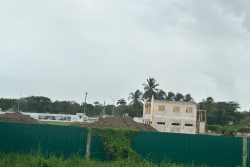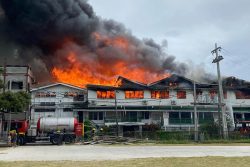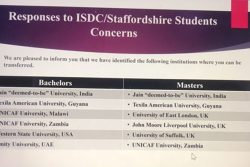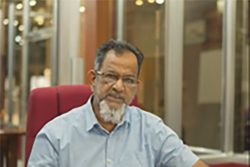Part 4
In this week’s column I begin consideration of the third grouping of challenges and threats facing near to medium-term macroeconomic stability in Guyana. This grouping is described here as socio-political, and, as indicated in last Sunday’s column, this covers two separate items, namely 1) income/consumption poverty, inequality, and vulnerability, and 2) the socio-political aftermath to the November 28, 2011, National and Regional Elections.
Poverty
Despite the fact that, at the start of the PPP/C’s administration in 1992 two decades ago, poverty was considered by the authorities to be the most intractable social, economic and political problem facing Guyana, over that long period of time there have been only three years in which an annual national survey of living conditions and poverty has been conducted: 1992, 1999 and 2006. Under the prodding and guidance of the international financial institutions (IFIs), official policy to deal with poverty was first put forward in the form of a Poverty Reduction Strategy Paper (PRSP) in 2001, co-authored with the IMF-World Bank group. Subsequently, two progress reports on the PRSP were issued in 2004 and 2005. In 2008 a second PRSP was completed. And, last year (July 2011) a third PRSP was issued to cover the period to 2015.
 The latest 2011 PRSP has reviewed, updated and, based on lessons learnt from experiences with the earlier PRSP, launched a further set of policy initiatives aimed at reducing poverty to the level the government is internationally committed to: that is, the 2015 target date of the Millennium Development Goals (MDGs) to halve the 1992 poverty rates.
The latest 2011 PRSP has reviewed, updated and, based on lessons learnt from experiences with the earlier PRSP, launched a further set of policy initiatives aimed at reducing poverty to the level the government is internationally committed to: that is, the 2015 target date of the Millennium Development Goals (MDGs) to halve the 1992 poverty rates.
The three years for which we have survey data: 1992, 1999 and 2006 show progress has been made in the reduction of both the moderate and extreme poverty rates prevailing in Guyana since 1992, based on the officially established poverty lines.
In these surveys extreme poverty is defined as lacking the ability to consume a nutritionally adequate basket of food items (this comprises 2400 calories per day for an adult male, as recommended by the Caribbean Food and Nutrition Institute (CFNI). When to this, essential non-food items are added, we have the measure of moderate poverty. For the most recent survey year (2006) the monetary values of the ‘food only‘ and ‘food plus essential non-food items‘ components were established as: G$8,395 and G$11,395 per month respectively.
Over the three survey dates (1992, 1999 and 2006) the poverty rates have declined. For extreme poverty, the rates were 28.7, 19.1, and 18.6 respectively. For moderate poverty the respective rates were 43.2, 36.3 and 36. While the decline in the poverty rate is welcome for all Guyanese, there is still cause for considerable concern for the several reasons indicated below.
First, the decline in the two poverty rates (extreme and moderate) has been very modest between 1999 and 2006. This, I believe, reflects the slow rate of economic growth recorded during that period (this was just about 0.5 per cent per annum). Indeed it is estimated that to meet the MDG target rate by 2015, Guyana’s real annual growth rate will have to be between 4.5 and 5.0 per cent. Second, the regional variation in the poverty rates has been marked, revealing a persistently striking tendency to disadvantage the interior and hinterland areas. Third, because of the population distribution and ethnic make-up of the regions, the tendency referred to above, severely punishes the Amerindian communities. Thus, over the entire period of the surveys (1999-2006) poverty in the Amerindian interior and hinterland areas has hovered around three- quarters of the hinterland population! Finally, the low monetary value of the poverty line makes it fragile. It is distressing that so many Guyanese do not even earn two United States dollars per day.
In light of the above considerations, the evidence clearly suggests that a strong overhang of poverty persists in Guyana. This I believe poses serious challenges and threats to macroeconomic stability over the near to medium-term, particularly given the fact that, for two decades now, poverty has been deemed the most intractable social, economic and political problem facing the country.
Inequality
While there are several measures of inequality, income and/or consumption inequality in a population is usually best captured in a statistic or measure termed the Gini coefficient. Put simply, this coefficient ranges between zero, (which expresses absolute equality) and unity, (which measures absolute inequality). In Guyana the Gini coefficient based on consumption was estimated at 0.35 in 2006. Again, this varies across regions with the interior and hinterland areas exceeding the national average.
Put another and perhaps more familiar way, the consumption data for 2006 reveal that the richest 20 per cent of Guyanese households accounted for 42 per cent of national consumption, while the poorest 20 per cent accounted for only seven per cent of national consumption.
Again, it is common wisdom that inequality puts pressure and stress, not only on social and political relations, but economic relations and activities as well.
Vulnerability
The National Budget 2012 devotes an entire section to addressing the issue of vulnerable groups and the Budget’s targeted interventions are designed to deal with these. The groups identified are formidable: children, youth, single parents; elderly, homeless, indigenous communities and residual “other” groupings which highlight pockets of unemployment. The important macroeconomic consideration we must bear in mind here is that government monies spent on principal and interest repayments of the public debt, which have grown alarmingly, compete directly with sums that could be spent in support of vulnerable groups.
In next week’s column I shall wrap-up the discussion of the third grouping of challenges and threats to economic stability and then proceed to consider fourth and last grouping, described as economic structural.








